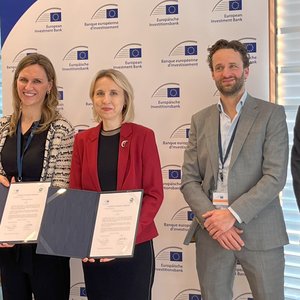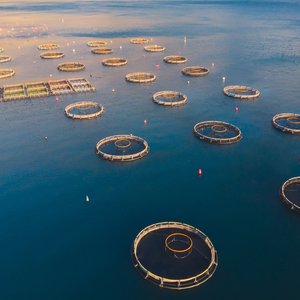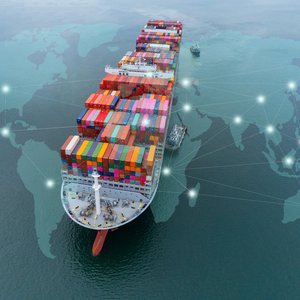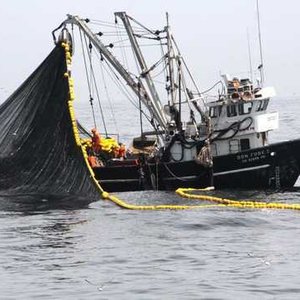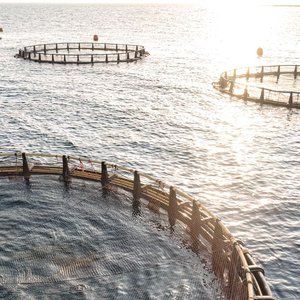“Animal protein production and the production of animal feed will keep growing in 2024 but at a slower pace,” forecasted Hamlet Protein CEO Erik Visser while talking about key market drivers and developments.
“South American and Asian markets are better positioned for growth than mature markets in Europe and North America. Animal diseases and geo-political matters can potentially have a strong impact on the industry, and ESG regulation will play a more prominent role in business decisions. Feeding a growing world population in an efficient and sustainable manner will be the main focus for all market segments,” Visser said.
“Markets vary greatly across species and geographies. On a consolidated level, we foresee a continuous growth in animal production in 2024, but at a slower pace,” Visser said.
In Europe, regulation is having a strong impact on the entire supply chain, not only on the number of animals reared in certain geographies but also on the conditions on farms in terms of environment and animal welfare, as well as on the supply of raw materials. “Where poultry consumption is expected to grow, we foresee a decline in beef and pork,” he said.
“Asian economies in general, and China in particular, are under pressure which affects consumer spending. Especially in China, we expect to see continuous pressure on animal numbers if consumption levels do not return to historic levels. Poultry is expected to grow in China, with growth in pork expected in other Asian geographies.”
“North America has been seeing pressure on mono-gastric numbers, which is expected to continue in 2024 until the market rebalances. Mexican growth depends strongly on the US, both in terms of supply of feed and consumption of animal protein. On the other hand, Canada relies on US consumption for its’ pork export at the same time the US will be looking at Canada for poultry export potential.”
“In South America, Brazil is the powerhouse. Growth for the region will come from export opportunities. Development in Chinese demand would drive sales opportunities for pork, whereas poultry exports will also depend on the US market position.”
Feed costs
“A healthy supply chain should allow all market segments to generate a healthy profit. That means from farm-to-fork. That has not been the case for all markets in 2023,” said Visser.
“As 75% of the cost of production comes from nutrition, animal protein producers will closely monitor developments in global feed commodities. Corn, soy and wheat make up a large portion of the diet and their price levels will be impacted by El Niño, especially when looking at South American harvests, the continuous war in Ukraine that reduces exports from the region, a possible escalation of the Israel – Hamas conflict spilling over into a regional war, regulation on supply chain in the EU and new policies adopted by the recently elected Argentinian president, to name a few,” Visser stated.
“Even though, at relatively high levels still, feed costs have come down in 2023 and we expect a further decline in 2024. Similarly freight costs have come down last year, and we expect to see a further decline in the new year.”
ESG
“Where consumers have been focusing on animal welfare in the past fewyears, we now see an increasing focus on sustainability from consumers and governments alike. With it, sustainability has moved from being a nice to have in corporate strategies to a license to operate,” Visser said.
“Europe is taking the lead in implementing a wide range of ESG regulations and companies will have to invest time and money to keep up with a changing landscape. That investment may generate an inflationary effect that will need to be priced in.”
Geo-politics
“With elections in sixty countries, representing half the world population, 2024 will be an incredibly important year for political institutions, policies, and possible geo-political tensions. The European Parliament, India, Mexico, and the US, to name a few powerhouses, will all potentially see a different leadership emerge,” said Visser.
“Our industry, just like any other, benefits from clear and consistent policy-making and a free flow of goods and people to drive business. That gives entrepreneurs and investors the confidence to invest for growth. For export businesses to thrive, relationships between countries need to be stable and friendly so companies can compete on quality and service.”
Labor
“The animal protein and animal nutrition industries see an aging workforce. It is critically important that a career in these segments is considered an attractive option for students and young professionals. The sector, and individual companies as well, need to engage in employer branding, defining a clear purpose that new hires can commit to. Sustainably feeding a growing world population creates plenty of opportunities for a strong messaging,” Visser said.
The company
“We estimate the market size of SSP at 1.6 million Mt and expect the market to continue to grow at an average of 3-4% year-on-year. This market growth is supported by macroeconomic drivers such as a growing world population, increased regulation, and further market consolidation. At the same time, we will take a share of animal protein diet sources like plasma and fishmeal to further increase our volumes,” Visser said.
“At the end of 2023, we came out with new research data on protein kinetics. The faster protein is digested and absorbed, the more of it is available for growth. Our research, which was done in cooperation with renowned universities, clearly shows that Hamlet Protein provides the fastest protein source available in the market. Our teams will share this information with producers and work with them to formulate more efficient diets.”
“Sustainability is core to Hamlet Protein’s strategy. We have created a clear ESG roadmap to comply with existing and newly introduced laws and regulations and meet industry standards. We will continue to work with our suppliers and customers and assume our responsibility towards creating a sustainable supply chain on all levels,” Visser concluded.



